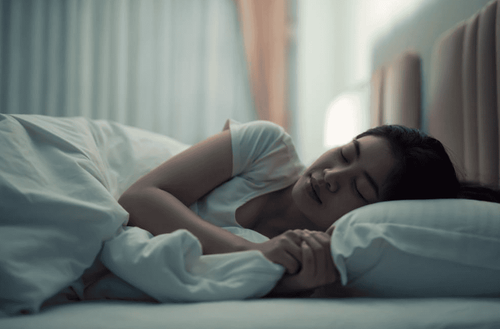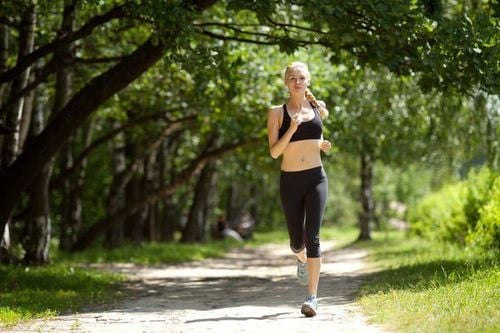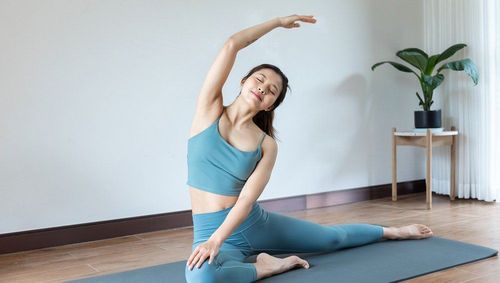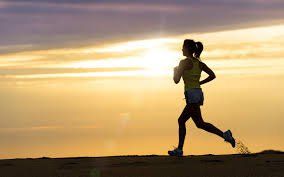This is an automatically translated article.
A national survey found that about 55% of people who practice yoga help them get a better night's sleep, about 85% say yoga helps reduce stress. You can use props like splints, blankets, and blocks to create a comfortable posture so you can stay in place longer and keep practicing.
1. What are the benefits of doing yoga before going to bed?
Lack of sleep is believed to be the cause of:
Higher accident rates; Declining cognitive function; Weight gain; Health problems such as metabolic heart disease, high blood pressure, diabetes; Decreased sex drive; Higher rates of depression; Aging skin; Forgetful... Currently, there are many ways to solve the problems of sleep disorders, most doctors advise patients to apply natural remedies to deal with the problem first instead of medication immediately. One of the best natural remedies is to reduce stress before bed with some light and relaxing yoga exercises. But first you need to know the benefits that yoga gives you:
1.1. Relieve Insomnia Regular yoga practice can help you manage insomnia symptoms. You can fall asleep faster, sleep longer, and go back to sleep after waking up at night.
Research from 2019 indicates the effectiveness of yoga and other mind-body therapies in treating insomnia and promoting better sleep. In addition to yoga, people who practice meditation, tai chi, and qigong have improved sleep.
1.2. Weight loss Regular yoga practice has been linked to weight loss and quality sleep. Doing some yoga before bed can help you lose weight. It can also help you be more mindful of your eating habits.
1.3. Improving Quality of Life Yoga is a natural alternative to sleep aids commonly used by older adults. Researchers in a 2013 study looked at the long-term effects of yoga practice in older adults. They found that practicing yoga had a positive effect on sleep quality and overall life compared with a control group, who didn't see much benefit.
1.4. Promoting relaxation Yoga can help bring your body into a calm state and is also known as the relaxation response. This is the opposite of a negative reaction or denial. Performing gentle yoga poses can help you relax and reduce your euphoria.
This can potentially cause you to have low blood pressure and lower levels of the stress hormone cortisol. A routine that can help reduce stress-related anxieties like weight gain, anxiety, and insomnia.
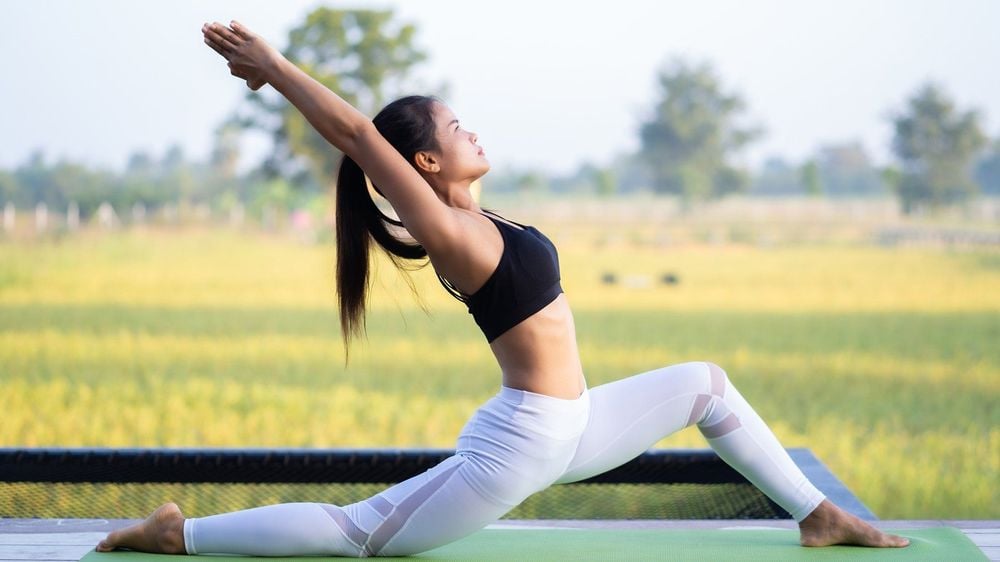
Tập yoga thường xuyên có liên quan đến giảm cân và giấc ngủ chất lượng
1.5 Limitations There aren't many limitations to doing yoga before bed as long as you do the yoga poses safely. If you feel that even gentle poses will stimulate your mind or body and keep you awake, it's best to avoid them. Instead, focus on meditation, breathing techniques, or tai chi.
Your body may be more open, relaxed and flexible in the last hours of the day. Use muscle strength to balance flexibility and avoid pushing yourself beyond your limits. If you have any medical concerns, including injury, talk to your doctor before starting a new exercise.
2. The best yoga poses to help you sleep better and relax before bed
With every exercise, keep for the allotted time and remember the most important part is to breathe slowly, evenly and deeply.
2.1. Waterfall This is a pose that actively calms the lower body and provides a calming effect on your central nervous system. It's also a great way to stretch your hamstrings, which are often strained when you're standing or sitting all day.
To start, lie on your back, raising and extending your hips and sitting bones a little to make sure your back is nice and long. Bring your knees in front of your chest, and then extend your legs so they're at a 90-degree angle to your body. Your knee may or may not be bent, depending on how your body feels. Bring your hands out to the side, close your eyes, relax, breathe deeply for 10-15 breaths.
2.2. Happy baby This yoga pose is performed continuously after the waterfall pose and is considered a pose to relieve tension in the lower back and mind.
From waterfall pose, bring your knees back into your chest and grab the outsides of your feet. Extend your legs slightly and extend your knees, so that your elbows are on the inside of your thighs. Press it with your hand, the stretch feeling is very comfortable. You can roll gently from side to side or forward and back to give your lower back a little massage. Hold this position for 10-15 minutes.
2.3. Twisted Root This is another great pose for your spine, eliminating any aches and pains that may occur when sitting at a desk or walking.
It also provides a soothing massage for your internal digestive organs, which can help your dinner digest before bed.
From happy baby pose, lower your legs so that your heels are on the bed and your knees are facing the ceiling. Push through heels, lift butt and return to bed, then lean to one side. Bring your knees up toward your chest, stopping wherever feels comfortable, then let them fall on the opposite side. You may want to support them with a pillow if this is uncomfortable. Spread your arms wide or bring them into a cactus shape, then look in the opposite direction, your knees should also straighten your neck slightly. Hold for 10-15 breaths, then repeat on the opposite side.
2.4. Sleeping Butterfly This pose will help open your hips, which can close and tighten while sitting, as well as stretch across your lower back.
Slowly lift yourself off of Twisted Roots and bring the soles of your feet in front of you, focusing on your knees. Your feet can be either near or far from your pelvis for comfort, and you may need to sit on a pillow to raise your hips or use your knees to support your knees. Inhale and stretch your spine upward, then gently begin to fold forward, flexing your spine and neck to bring your forehead toward your legs. Stop wherever you feel as if you've found a good body, and hold for 10-15 breaths, breathing into your back
2.5. Supported Child's Pose This is the perfect pose to end a series of movements - not only does it give the hips and back a final stretch, but it's also very gentle on our central nervous system, as it feels great. like a big hug.
Grab a pillow (or a recliner) and sit at one end, your thighs at the sides, and the sitting bones against the heels. Gently bend forward to rest on your knees, head turned to one side, keeping your sit bones and heels close together if possible. Otherwise, put blankets or pillows between them. Relax into the pillow, let it hold your weight, and try to get rid of any thoughts that are still lingering in your head. Hold this pose for 10-15 breaths, then repeat with your head turned the other way, but don't worry if you oversleep before moving to the second side just because it's too relaxing.
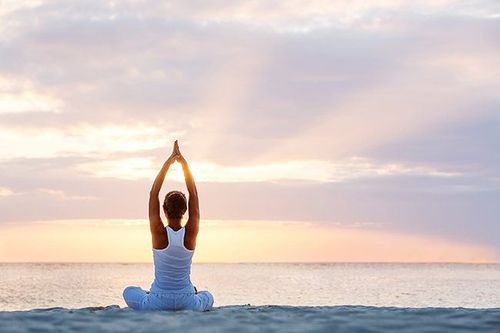
Yoga trước khi đi ngủ có lợi cho những người có nhiều lo lắng về giấc ngủ
2.6. Corpse pose This is considered the perfect pose to end the session, during this time you can relax to the fullest and even fall asleep.
You lie flat on your back in bed; Place your feet slightly wider than hip distance; Align your head, neck and spine; Focus on the breath as you completely release the tension in your body; Allow your body to fall heavily; Hold this position for up to 15 minutes. 3. A few quick tips There are a few ways to get the most out of your bedtime yoga routine. Set an achievable time, even if it's only 10 minutes. This way, you'll have plenty of time to complete your chosen exercise, stretch it out if time allows, and go to bed at the time you've planned. Choose slower yogas like hatha, Yin, or restorative yoga. Avoid yoga exercises like hot or vinyasa. Focus on poses that are calming, restorative, and introspective. Stay away from dynamic, high-energy positions, such as the supine position. At the end of the day, do breathing exercises to promote quality sleep. Create a healthy sleeping environment by choosing a comfortable temperature, electronic room cleaning, and using candles or an essential oil diffuser to create a relaxing aroma. Exercise in a room with low light and use an eye mask to keep it longer. For background music, choose music that helps you fall asleep. You can also use earplugs to block out the noise. Make small and simple changes to your bedtime routine Design your yoga session with a few achievable goals based on the amount of time you have available and the key improvements you want perform. Bedtime yoga is beneficial for those with a lot of sleep anxiety, whether you're looking for deep sleep or beyond. Do this relaxation pose to relieve muscle tension, relax and let loose. Stick to practice and after only a few weeks you will see the benefits it brings.
Please dial HOTLINE for more information or register for an appointment HERE. Download MyVinmec app to make appointments faster and to manage your bookings easily.
References: healthline.com, calmmoment.com, gethealthyu.com




